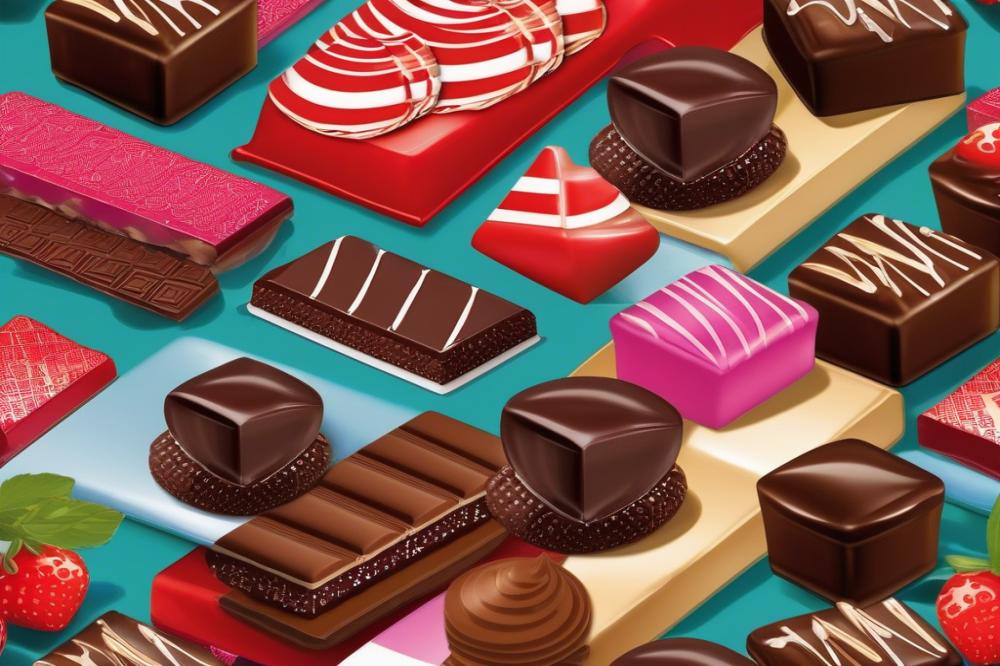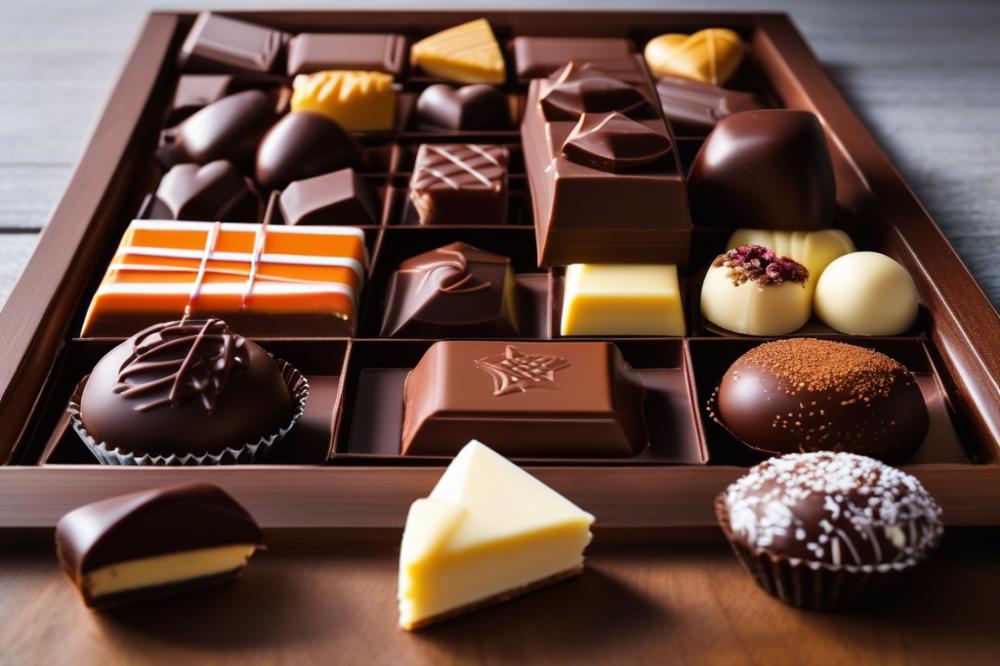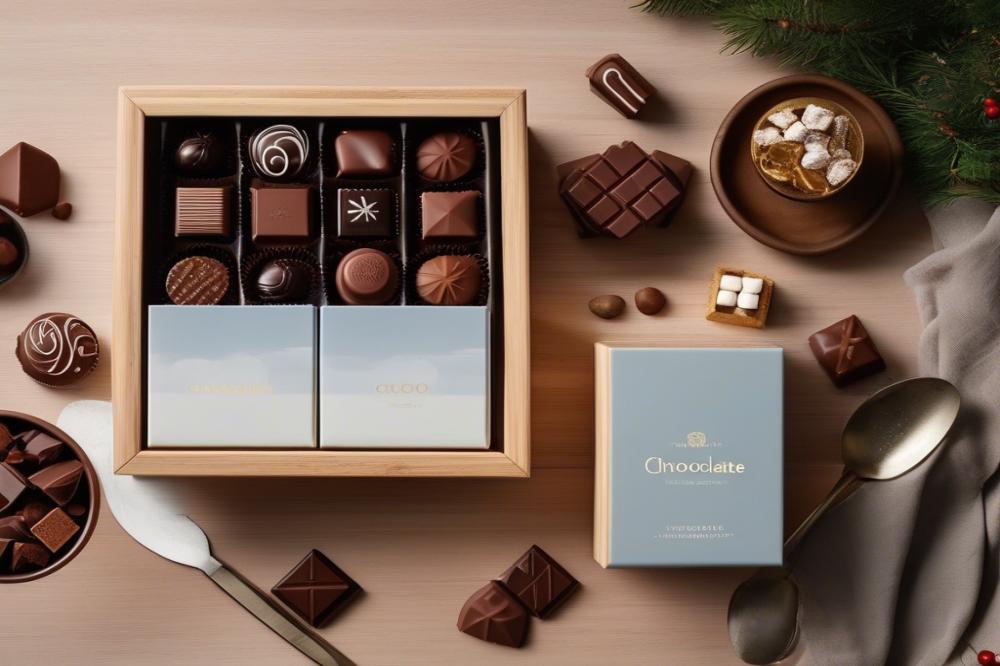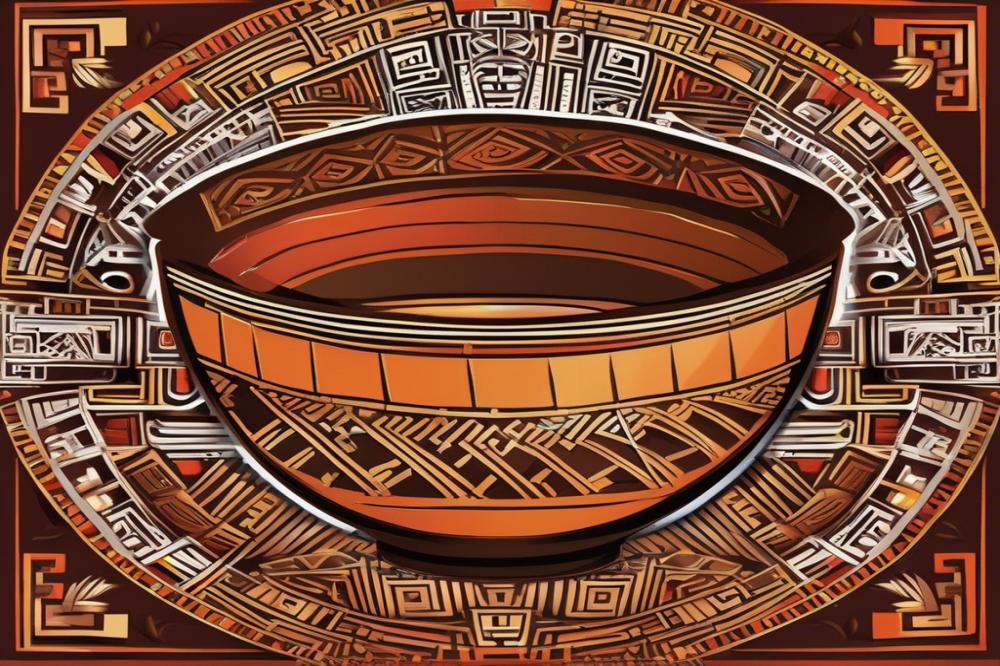Denmark’s sweet tooth: Unwrapping chocolate consumption Patterns
Europe has long held a reputation for its love of chocolate. The continent leads in both production and enjoyment of this beloved sweet. chocolate trends vary from country to country, reflecting diverse traditions and tastes. Countries like Switzerland and Belgium are famous for their rich, luxurious confections. Meanwhile, many nations in Europe embrace chocolate as a daily treat, ingrained deeply in their food culture.
Danish people also share this sweet tooth. In Denmark, chocolate is more than just a snack; it represents a way of life. From lavish dessert trends to simple confectionery indulgences, chocolate plays a vital role in Danish society. Local shops proudly display an array of treats, showcasing the country’s rich heritage in sweets. This unique love for chocolate significantly shapes their consumer behavior and preferences.
The purpose of this article is to explore these patterns of chocolate consumption. By examining how Danes view and enjoy chocolate, we can uncover important insights into the confectionery market. Understanding trends in Denmark provides an interesting lens through which to view their broader food culture. Additionally, it allows us to delve into the impact of sugar consumption on health and lifestyle choices. Through this exploration, we hope to reveal why chocolate remains a cherished part of Danish life.
The Chocolate Consumption Landscape in Denmark

Denmark is known for its sweet tooth, and chocolate plays a big part in that. Recent statistics reveal that the average Danish citizen consumes around 8 kilograms of chocolate each year. This places Denmark among the top chocolate-loving countries in Europe. The combination of high-quality ingredients and a rich dessert culture shapes the nation’s chocolate trends.
When comparing Denmark’s chocolate habits with other European nations, the figures tell a fascinating story. Switzerland tops the charts with a staggering average of 12 kilograms per person, while Germany follows closely behind at 10 kilograms. French consumers also show a strong preference, indulging in about 9 kilograms annually. The data suggests that while Denmark enjoys its treats, it still trails behind these nations in sheer volume.
Sugar consumption trends also play a crucial role in shaping chocolate preferences in Denmark. Increased awareness about health risks associated with excessive sugar intake has led many consumers to seek alternatives. Dark chocolate has gained popularity, often seen as a healthier option. This shift reflects broader trends in Denmark’s food culture, where there is a growing demand for products with less sugar.
Consumer behavior is changing, with a focus on quality over quantity. Craft chocolate makers are seeing a rise in popularity as people become more curious about ingredients and origins. The confectionery market is evolving, becoming more diverse and catering to various tastes. People now seek unique flavor combinations, which enhances their overall experience with Danish sweets.
As dessert trends continue to change, so do preferences. Many consumers are looking for organic or fair-trade options. This growing consciousness about sourcing also affects purchasing decisions. Fine chocolates with minimal sugar are becoming favored, reflecting a desire for premium enjoyment rather than excessive indulgence.
Danish Sweets and Chocolate Preferences

Traditional Danish Sweets and Desserts
Denmark boasts a rich tradition of sweets. From the classic Danish pastry to the delightful kringle, these treats often take center stage in local food culture. People have a soft spot for marzipan, a sweet treat made from sugar and almond paste. It appears in many forms, especially during holidays and celebrations. Another favorite is flødebolle, a chocolate-covered marshmallow confection. These sweets reflect not only a love for sugar but also a connection to Danish heritage.
Popular Chocolate Varieties and Brands in Denmark
In the realm of chocolate, Denmark has a distinct palette. Milk chocolate reigns supreme, with its creamy texture appealing to many. Popular brands include Frellsen, which is known for its high-quality products. Another notable name is Toms, famous for its classic chocolate-covered candies. Dark chocolate has found its way into the hearts of some consumers as well. With its slightly bitter taste, it provides a contrast to sweeter options. Many Danes also enjoy premium brands with unique flavors and ingredients. These chocolate trends allow for a diverse selection in the confectionery market.
Insights into Consumer Behavior Regarding Chocolate Choices
Danish consumers exhibit interesting behaviors regarding their chocolate preferences. Many indulge in sweet treats as a form of comfort. Seasonal changes influence choices; during winter, richer chocolates often gain popularity. A growing trend shows a shift towards healthier options, with an increase in sugar-free varieties. This change indicates a greater awareness of sugar consumption and its effects on health. When it comes to buying chocolate, Danes often seek quality over quantity. Special occasions see people splurging on luxury chocolates. Overall, it’s clear that the sweet tooth in Denmark drives not just consumption but also the ever-evolving trends in the country’s dessert landscape.
Trends in Denmark’s Chocolate Market
Recent Trends in Chocolate Consumption and Production
Denmark’s chocolate trends are shifting rapidly. More people are indulging in sweets than ever before. The confectionery market is responding to these changing habits. Many consumers prefer high-quality options. In recent years, production has also adapted to these preferences. Local companies are focusing on sustainable sourcing. This trend aligns with a growing demand for responsibly made products.
Impact of Health Awareness on Chocolate Trends
Health awareness plays a significant role in shaping chocolate preferences. Many Danes are becoming more conscious of sugar consumption. As a result, dark chocolate is gaining popularity. This type often contains fewer sugars and offers additional health benefits. Some brands even promote chocolate with superfoods. This shift indicates a desire for indulgence without the guilt. At the same time, traditional desserts remain popular. Balancing health with pleasure is a key aspect of modern food culture.
Emergence of Artisanal and Premium Chocolate Products
Artisanal chocolate is making a mark in Denmark. Small, local chocolatiers are crafting unique flavors. Consumers increasingly seek these high-quality, hand-made products. Premium chocolates often showcase a variety of textures and ingredients. Markets are filled with bars that highlight local flavors. This trend reflects a broader change in dessert trends. People now want more than just basic sweets. They seek experiences that engage their taste buds. The rise of gourmet chocolate signifies a turning point in Danish sweets. Enthusiasts are willing to pay a premium for quality. Chocolate is not just a treat; it’s an experience.
The Role of Chocolate in Danish Food Culture
Chocolate holds a special place in Danish cuisine. It is often not just a treat but a part of everyday life. Many Danes enjoy a piece of chocolate after meals or with coffee. This habit reflects the country’s sweet tooth and appreciation for delicious flavors. In recent years, chocolate trends have shifted, with consumers seeking high-quality, artisanal options. The confectionery market is evolving to meet these demands.
Chocolate-related Traditions and Celebrations
The role of chocolate expands during celebrations. Birthdays and holidays are commonly marked by cakes and treats infused with this beloved ingredient. Special occasions, including Easter and Christmas, often feature chocolate in various forms, such as bunnies or festive pralines. These traditions not only highlight chocolate’s importance but also bring people together. Many families have custom recipes that they prepare every year, creating bonds and lasting memories.
Social Habits Influenced by Chocolate
In Denmark, sharing chocolate is a social gesture. Friends often exchange sweets during gatherings, highlighting the warm community vibe. Social habits often revolve around chocolate, whether it’s a treat with friends or a dessert trend shared online. Spontaneous chocolate tasting events have become popular among younger Danes. As people explore new chocolate preferences, social media fuels this exploration—showcasing the wide variety available.
Chocolate’s relationship with consumer behavior is intriguing. While many enjoy traditional Danish sweets, there is a growing interest in international flavors. The rise in sugar consumption, coupled with health awareness, influences how chocolate is perceived. Instead of eating large quantities, some now prefer small, quality bites. This shift illustrates a broader trend in Denmark towards enjoying treats mindfully, while still embracing the joys of chocolate.
Overall, Denmark’s food culture embraces chocolate in various ways. Danes cherish sweet treats not only for their taste but also for their ability to foster connections. As trends change, chocolate remains a cornerstone of social life and culinary delight.
Wrapping Up Denmark’s Love for Chocolate
Denmark showcases a vibrant culture centered around delightful treats, particularly chocolate. The country’s residents have a remarkable sweet tooth, evident in their frequent purchases and preferences for various chocolate types. Data reveals that Danes consume a substantial amount of chocolate each year, with dark varieties gaining increasing popularity. The tradition of quality craftsmanship in Danish chocolate production plays a significant role in maintaining this interest.
Looking ahead, several chocolate trends appear on the horizon. Local producers are emphasizing sustainable sourcing and ethical practices. Consumers are becoming more conscious of where their food comes from, and this awareness influences their choices. As health concerns rise, there’s a shift toward options that include organic or high cacao content. From seasonal specialties to artisanal variations, Danes seem eager to embrace new flavors and experiences.
The role of chocolate in Danish dessert culture remains firmly entrenched. As baking and sweet treats evolve, chocolate often finds its way into traditional recipes. Many Danes appreciate the combination of chocolate with local ingredients, uplifting classic desserts. This synergy not only enhances flavor but also fosters a deeper connection to their culinary heritage. Future generations are likely to maintain this relationship, blending tradition with modern preferences.
In summary, Denmark’s connection to chocolate is strong and will likely grow even deeper. As trends shift and evolve, chocolate will continue to provide joy and comfort to many. The Danish will keep discovering new ways to enjoy this favored treat, ensuring its place in their hearts and on their tables.



